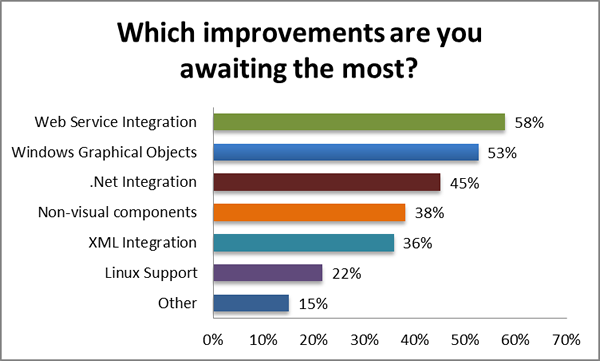PowerBuilder Survey 2013 Results
Survey summary
- Which versions of PowerBuilder are currently used?
- Types of PowerBuilder projects in 2013
- PowerBuilder and databases
- PowerBuilder and .NET
- Web-Enablement
- Reports
- Other technologies used: Java or .NET?
- What do you think of PowerBuilder?
1. Which versions of PowerBuilder are currently used?
PowerBuilder 12 Classic is currently the most-used version among surveyers; adoption of PB12.NET was at 2% for 2013. Between 2011 and 2013, PB 11 usage declined as more developers upgraded to PB 12; however, it still makes up a quarter of the versions being used by those surveyed.
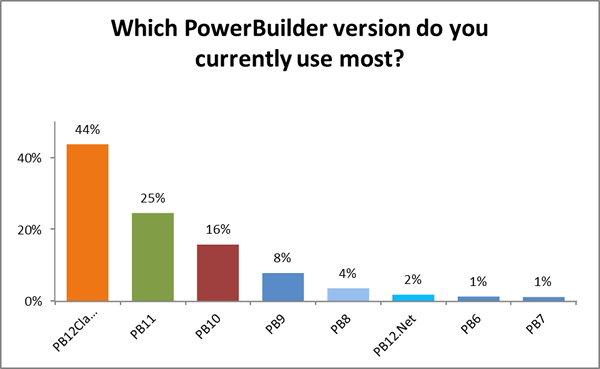
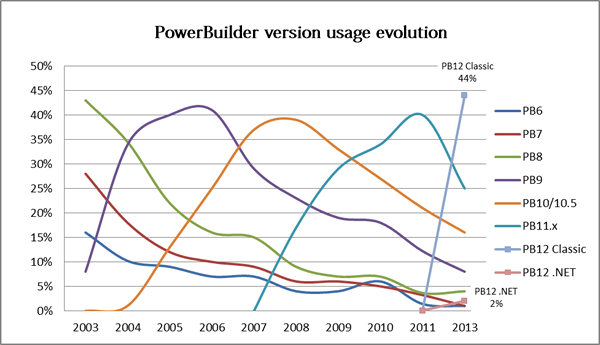
Over a third of participants are looking to migrate to a new version of PowerBuilder. This figure is down by 10% from 2011 as a number of developers have already migrated to PB 12 and are awaiting the release of PowerBuilder 15.
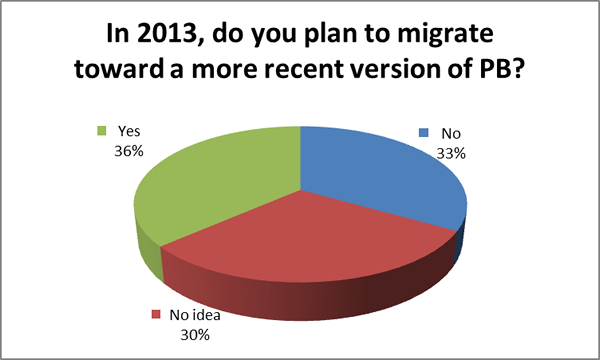
2. Types of PowerBuilder projects in 2013
Almost 90% of participants envisage a long-term usage of PowerBuilder within their company; this figure is up 3% from 2011 and up 10% from 2010. The number of companies participating in this survey who no longer use PowerBuilder has stayed fairly static, with a one percent decrease from 2011.
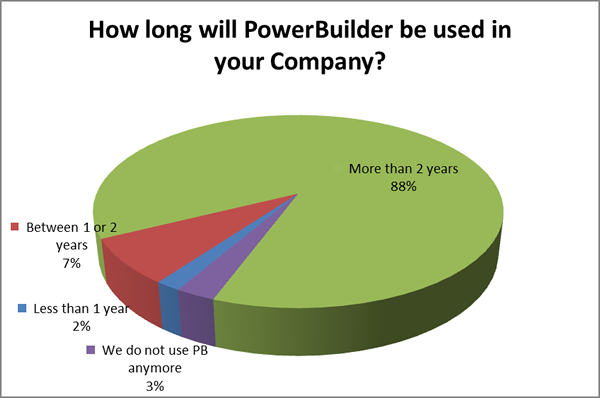
Small and medium size projects remain the most popular among companies developing with PowerBuilder, with these making up 90% of the figures. The number of large projects using PowerBuilder has remained the same since 2011, with 7% of PB Projects using 20 or more developers.
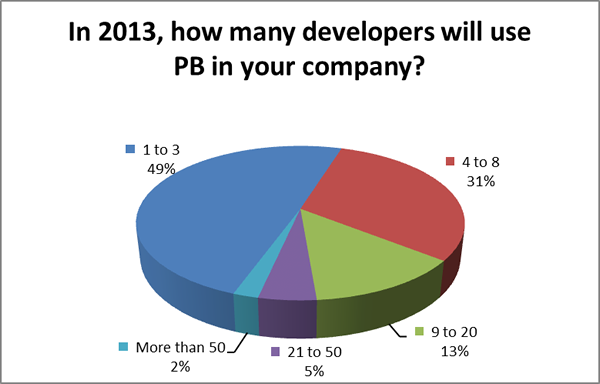
The numbers between 2011 and 2013 remain steady for PowerBuilder developers in companies with over 20 devs. A decrease in medium sized development teams has been met with an increase in smaller teams.
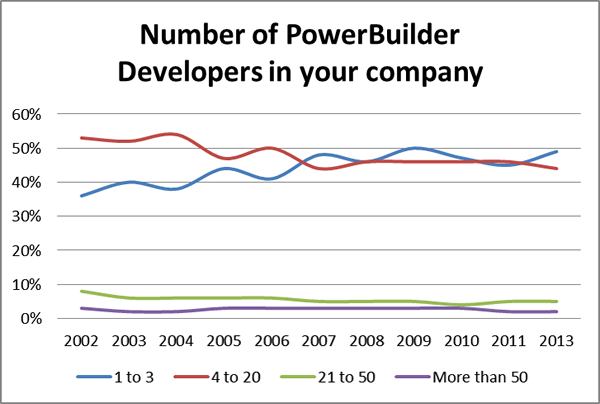
There's been a positive shift in what companies will be doing with their PB projects - 10% more companies than in 2011 will be developing and maintaining their applications. This has been met by a 10% decrease in those only maintaining their existing PowerBuilder applications. Projects concentrated solely on the development of new applications remains the same as 2011 at 5%.
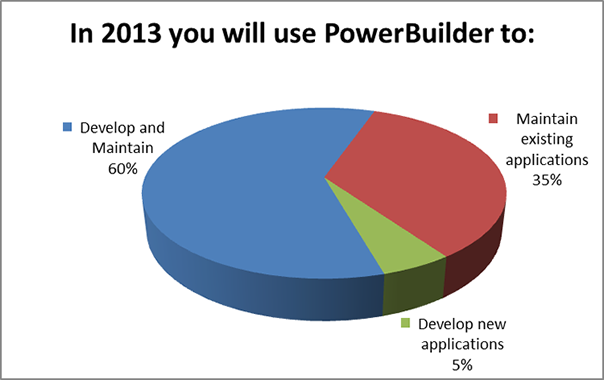
3. PowerBuilder and databases
Since 2011, SQL Server has gained in popularity among PB developers surveyed, with a 10% increase. Oracle remains in second with a 3% increase from 2011.
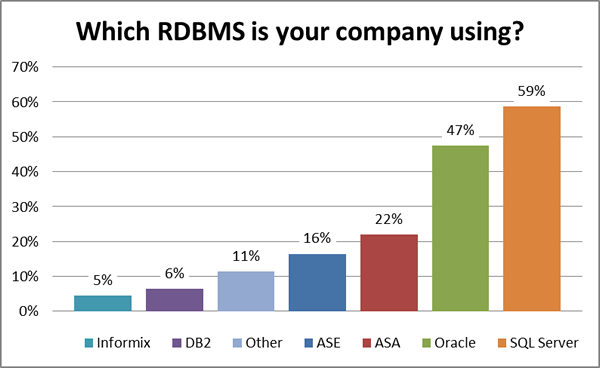
Fifty five percent of developers are including stored procedures in their applications with a 1/3 including just a few. These numbers are similar to 2011.
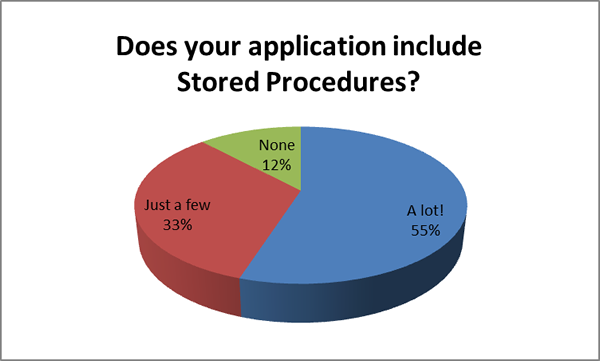
5. Web Enablement
Deploying to the web is continuing an upwards trend as more companies seek to improve application accessibility; the number of applications remaining client/server is down 4%, and the number of those who intend to web enable is up 2% from 2011. The number of those planning on/already web-enabling their applications with Appeon Web is up from 7% to 11% in 2013.
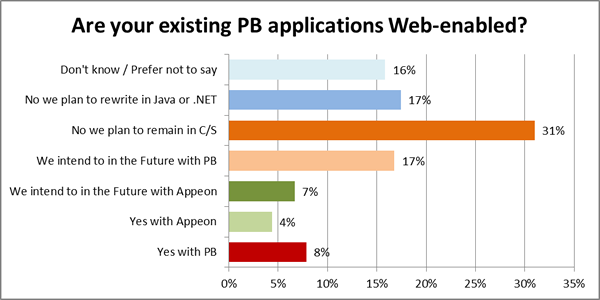
6. Reports
Half of participants have end-users that need to create reports by themselves, with a quarter needing to do so on a regular basis.
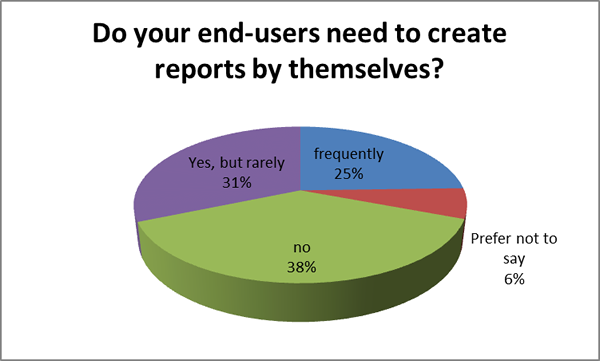
7. Other technologies used
.NET technologies continue to dominate this category, with more companies using .NET technologies than in 2011. There has been a 6% increase in .NET webform usage, which has now overtaken Java as the most used other technology as ranked by our participants.
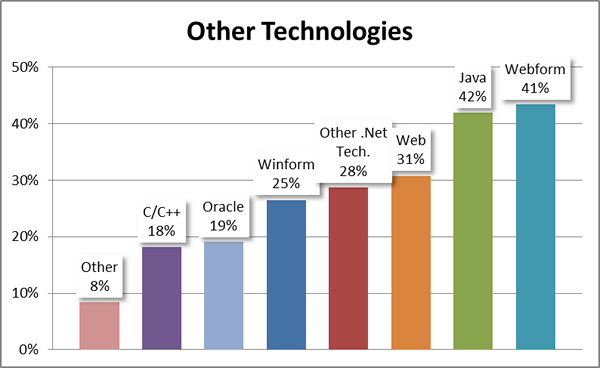
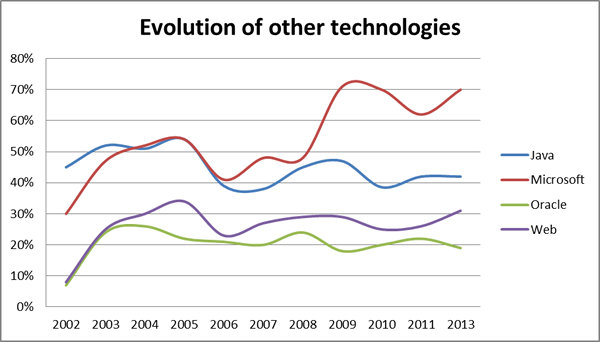
8. What do you think of PowerBuilder?
The feedback on PowerBuilder continues to be strong; 39% are extremely satisfied with it (9/10 or above), and 45% have a very good opinion (7,8) of PowerBuilder. Only 15% gave PB a mark of 6 or below, down from 2011s 16% and 2010s 22%.
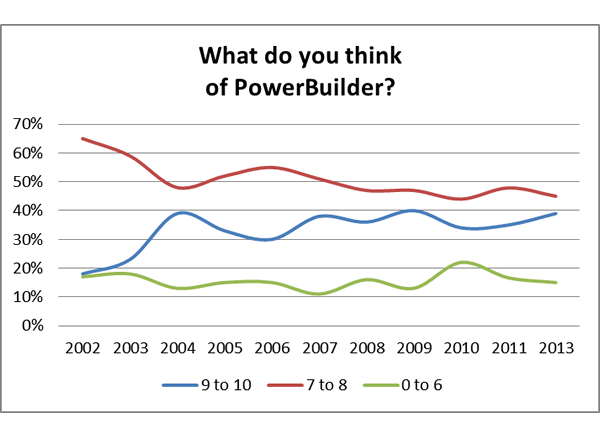
As was the case in 2011, this year there's an increase in interest for web service integration (10% increase). Windows graphical objects have taken over .NET integration as the second most awaited improvement. Those who responded other, overwhelmingly commented on the need for mobile compatibility and HTML 5 integration.
